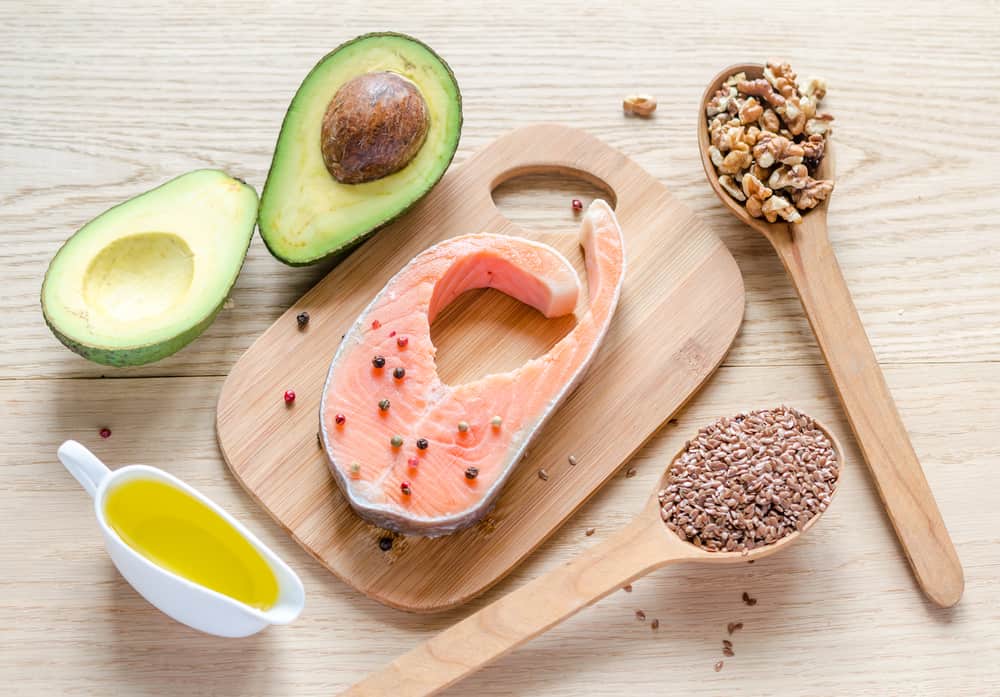Contents:
- Medical Video: What are the Benefits of Omega 6 and Omega 3 Supplements?
- Get to know various types of unsaturated fatty acids
- Omega-3 fatty acids
- Omega-6 fatty acids
- Omega-9 fatty acids
Medical Video: What are the Benefits of Omega 6 and Omega 3 Supplements?
Basically, omega 3, 6 and 9 are unsaturated fatty acids needed by the body for cell formation and controlling inflammation. You can get these three types of nutrients from plant foods and marine fish meat.
But these three types of unsaturated fatty acids do not actually have to be obtained in equal portions at once. Each has different roles and benefits for the body. Also, eating one too much may put you at risk for certain problems.
Get to know various types of unsaturated fatty acids
Omega-3 fatty acids
Omega-3 is a plural unsaturated fatty acid (polyunsaturated) which cannot be produced by the body. Omega-3s are further divided based on their type and role, including:
- Eicosapentaenoic acid (EPA) - Its function is to produce eicosanoid chemical compounds in the body that play a role in maintaining immunity and controlling inflammation. EPA is also known to help relieve symptoms of depression.
- Docosahexaenoic acid (DHA) - is one of the main components that builds 8% of the weight of the brain, so this type of fatty acid is very necessary in brain growth and development. DHA is not only needed by children during development but also in the elderly to prevent brain damage such as dementia.
- Alpha-linolenic acid (ALA) - because of its simplest form among the three omega-3 fatty acids, ALA can be reconstituted into DHA or EPA, but most ALA is used as an energy producer.
Besides functioning as a type of fatty acids, omega-3 is also absorbed by the body's cell membranes and has a function in regulating body fat by increasing good cholesterol (HDL_, preventing plaque in blood vessels, reducing fat buildup under the skin and fat that stored in the heart.
Unfortunately, modern diets that consume less sugar, carbohydrates and very little fat contain omega-3 fatty acids. Omega-3 deficiency can accelerate the development of obesity and heart damage. Omega-3s can be obtained from consumption of oily fish such as salmon, mackerel and sardines as well as plant-based food ingredients such as chia seeds, walnuts, and flaxseed.
Omega-6 fatty acids
Just like omega-3, omega-6 fatty acids are plural unsaturated fatty acids and are also essential fatty acids. In general, omega-6 is used as an energy producer but can also be reconstituted into arachidonic acid (ARA) to produce eicosanoid chemicals, just like EPA.
Although essential, most people are apparently not aware that their omega-6 intake tends to be excessive. This is due to the high consumption of cooking oil, fried foods, and mayonnaise. In addition, omega-6 is also found in nuts such as soybeans, almonds, and cashews. Excess omega-6 can disrupt the balance of regulating inflammation in the body. Basically there is little need for omega-6 in adults or around 17 grams for men and 12 grams for women.
Even so, some types of omega-6 actually remain safe even though they are consumed in greater amounts. One of them is omega-6 Gamma-linolenic acid (GLA) from Evening Primorse plant oil and borage in supplement form. GLA is absorbed by being converted into dihomo-gamma-linolenic acid (DGLA) which is known to be useful in relieving rheumatic symptoms.
Omega-9 fatty acids
Unlike the two fatty acids above, the body can produce its own omega-9 intake. This is because omega-9 includes non-essential monounsaturated fatty acids. Omega-9 has a major type of fatty acid known as oleic acid which is very easily obtained from food nuts and some animal fats.
Although it can be produced on its own, the body still needs additional intake from omega-9, for example to help regulate blood fatvery-low-density-lipoprotein (VLDL). And like other fatty acids, omega-9 also functions to reduce inflammation in the body. Oleic acid is also the basic ingredient of the nerve envelope covering the brain, called myelin.
Most omega-9 can be obtained from abati food. There is no recommendation for omega-9 intake because these fatty acids include non-essences, but also there are no safe limits on eating foods with omega-9. Food sources of omega-9 are olive oil, avocado, and processed oils from cashews or almonds.












